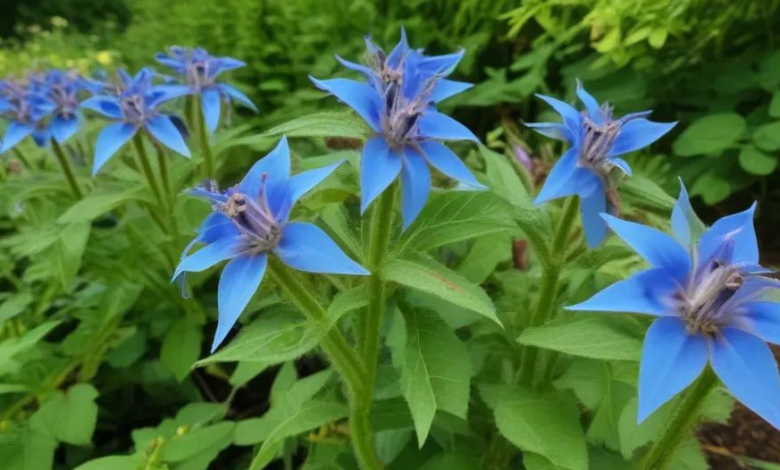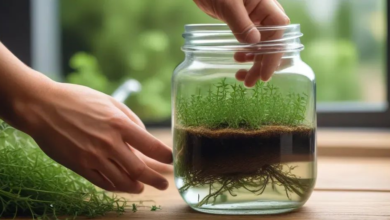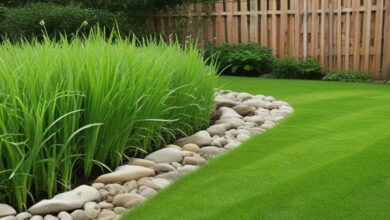10 Amazing Herbs that Flourish in Shade

Herb lovers may struggle to grow their plants in shaded gardens or balconies because many popular varieties need direct sunlight. Because many herb species prefer cooler, shadier conditions, they are diverse and found worldwide. Shade-loving sorrel and mint flourish in low light.
Mint a shade-tolerant herb with a refreshing aroma, has many culinary uses. Its tenacity and rapid growth make it ideal for filling shaded areas and making refreshing dishes and drinks. Parsley, chives, and cilantro are delightful and versatile herbs for herbal gardens. These plants like moderate shade.
When placed in shade, lemon balm and lemon verbena give drinks and pastries a citrus scent. Oregano and thyme, which thrive in sunlight, add powerful aromas to Mediterranean foods when grown in partial shade.
Sorrel gives salads, soups, and sauces a lemon-like flavor since it flourishes in cold, wet, and gloomy conditions. Despite its rarity, lovage gives dishes a celery-like sharpness and thrives in shady garden beds or containers.
You can increase your culinary options and add greenery and aroma in the shade by growing shade-loving herbs. Even without direct sunlight, these tenacious herbs can yield abundant harvests and excellent flavors. Grow them behind trees, north-facing walls, or shaded balconies. Shaded areas can be turned into herb gardens that give fresh, aromatic cooking ingredients with a little imagination.
| Herb | Details |
|---|---|
| Mint | Fast-growing, versatile herb; varieties like spearmint and chocolate mint tolerate partial shade, ideal for shaded gardens. |
| Lemon Balm | Citrus-scented herb with calming effects; thrives in light shade, perfect for herbal teas and culinary uses. |
| Parsley | Versatile herb with crisp flavor; can tolerate light shade, used in various dishes for its aromatic green leaves. |
| Chives | Mild onion-flavored herb; thrives in moderate shade while preferring sunlight; commonly used in salads and culinary dishes. |
| Oregano | Robust herb used in Italian and Mediterranean cuisines; can endure partial shade, adding warm flavors to dishes. |
| Sorrel | Sour and acidic herb; thrives in shady conditions, adds lemon-like flavor to salads and sauces. |
| Sweet Woodruff | Fragrant herb with white flowers; grows well in medium to full shade, used in herbal medicine and cuisine for its soothing aroma. |
| Thyme | Strongly aromatic herb; tolerates partial shade, versatile in culinary dishes adding warm and earthy flavors. |
| Cilantro | Unique-tasting herb; can take partial shade, widely used in global cuisines for flavoring salsas, curries, and soups. |
| Borage | Cucumber-flavored herb with blue blooms; thrives in full sun but tolerates partial shade, used in culinary dishes and herbal medicine. |
1. Mint (“Mentha spp.“)
Known for its stimulating taste and fast growth, mentha mint is a versatile herb. Mint loves sun and moisture. Some mint cultivars may tolerate partial shade, making plants ideal for shaded gardens.
Popular spearmint (Mentha spicata) has bright green, serrated leaves and a refreshing, somewhat sweet taste. It thrives in partial shade and quickly covers desolate areas with luxuriant leaves. Spearmint is in mint tea, mojitos, sweets, salads, and savoury foods.
Chocolate mint (Mentha x, piperita, Chocolate) has a cocoa-like flavor and aroma and is shade-tolerant. It thrives in partial shade and gives a unique flavor to baked products, beverages, and pastries.
Mint, regardless of variety, needs wet soil and pruning to avoid invasiveness. Mint can be grown in containers or other enclosed spaces to control its growth while enjoying its culinary and fragrant advantages.
Mint, which grows in shadow, adds flavor and freshness to herb beds and opens up many culinary options.

2. Lemon Balm (“Melissa officinalis“)
Melissa officinalis, or lemon balm, has bright green leaves and a citrus smell. Mediterranean lemon balm grows in shade.
The lemon-like smell and calming effects of this hardy mint herb are well known. The plant grows well in light shade and produces abundant foliage all season. For a calming citrus taste, herbal teas may incorporate fresh or dried lemon balm leaves.
The traditional plant lemon balm helps sleeplessness, anxiety, and tension. Many recipes use lemon balm. Its citrus aroma repels mosquitoes and other insects, making it ideal for outdoor use.
Shade-grown lemon balm needs moist, well-draining soil. Regular pruning promotes bushy growth and reduces lanky development. Lemon balm’s zesty perfume and flavor brighten gardens and enhance culinary, herbal, and beverage purposes. Everyone uses lemon balm.

3. Parsley (“Petroselinum crispum”):
Petroselinum crispum parsley grows and is adaptable. Crisp vegetable flavor and aromatic green leaves. Parsley thrives in full sun but may endure light shade, making it ideal for herb gardens.
For millennia, parsley has been eaten and used medicinally. Parsley from the Mediterranean is Apiaceae. Many dishes use this plant’s flat or curled leaves for flavor and appearance.
Parsley grows slowly but can produce tons of foliage in shade if managed. Damp, well-drained containers and gardens grow perishable parsley.
Parsley leaves and tendrils bring unique flavor to cuisine. Parsley bends. The finishing element brings color and freshness to meats, salads, sauces, and soups.
Parsley has digestive and immune-boosting vitamins, minerals, and antioxidants in addition to pestoise. Parsley provides taste and minerals to herb beds. Parsley flourishes in all herb gardens and shady places.

4. Chives (“Allium schoenoprasum”)
A delicate and aromatic onion-family herb, chives (Allium schoenoprasum) Chives’ mild onion flavor and thin green stems please chefs and gardeners. For shade gardening, chives thrive in moderate shade while preferring sunlight.
European, Asian, and North American perennial herbs have been produced for culinary and medicinal purposes for centuries. Chop or cut chives’ hollow, tube-like leaves to adorn soups, salads, omelettes, and baked potatoes.
Chives grow weaker in shadow, but with appropriate care, they produce great leaves. Garden beds and containers need water and drainage.
Their purple, globe-shaped blossoms attract bees and butterflies to gardens, making chives beautiful and tasty.
Shade-loving chives enrich herb gardens and have many culinary purposes.

5. Oregano (“Origanum spp.”)
Oregano, belonging to the Origanum genus, is a resilient and aromatic plant renowned for its extensive culinary use and ability to thrive in various environmental conditions. Oregano flourishes in optimal sunlight conditions, while many types may also endure partial shadow, rendering plants well-suited for herb gardens with limited exposure to direct sunlight.
Mediterranean oregano plays a crucial role in Italian, Greek, and Mediterranean cuisines. It is highly valued for its strong taste and ability to be used in various ways. The leaves of this plant, whether fresh or dried are utilized to enhance the taste of pizzas, pasta sauces, roasted vegetables and grilled meats. The flavor profile of these is characterized by a delightful combination of earthiness, complemented by hints of mint and citrus.
Oregano exhibits reduced growth rates in shady environments compared to those in direct sunshine. With appropriate maintenance, it will continue to generate exceptional foliage. Oregano requires soil with good drainage and regular watering in order to flourish. It ca thrives in both garden beds and containers.
Oregano possesses an extensive medical and therapeutic background, in addition to its culinary usage. Oregano is commonly employed by traditional herbalists for address issues related to digestion, lung function and inflammation.
Oregano is beneficial in shaded gardens because of its resilience and delicious taste. Both gardeners and cooks can savor its flavor and get its nutritional advantages.

6. Sorrel (“Rumex acetosa”)
The sour and acidic leaves of sorrel contribute a vibrant taste to a range of dishes, such as soups, salads and sauces. Sorrel is an exceptional type of plant that flourishes in this areas with a moderate amount of shade. This perennial herb is an excellent option for edible landscapes or herb gardens situated in shaded locations because its low maintenance requirements and ability to thrive it in many soil types.

7. Sweet Woodruff (“Galium odoratum”)
Woodland gardens and shady borders benefit from the fragrant herbaceous perennial Sweet Woodruff (Galium odoratum). This low-growing European plant has lance-shaped leaves and late spring–early summer white flowers.
Sweet Woodruff’s hay-like smell improves upon drying. Fragrance makes it useful in herbal medicine and cuisine. Teas and infusions made with Sweet Woodruff are soothing and diuretic.
Cooks flavor drinks, pastries, and sweets with Sweet Woodruff. Germany and Scandinavia flavor May wine (Maiwein) and May Wine Punch with it.
In wet, well-drained, organic-rich soil, Sweet Woodruff grows in medium to full shade. The creeping rhizomes generate a lush carpet of foliage and delicate blossoms in dark areas.
delightful Woodruff’s scent, beauty, and culinary versatility transform shaded gardens.

8. Thyme (“Thymus spp.”)
Strong, aromatic thyme grows in partial shade and is handy in the kitchen. Chefs and gardeners enjoy thyme’s tiny leaves and delicate blooms for their flavor and beauty. Mediterranean thyme tastes warm and earthy with lemon and mint. Fresh or dried leaves flavor soups, stews, sauces, meats, and roasted vegetables. Shade-grown thyme grows slowly but produces excellent leaves with care. Potted or garden-grown thyme needs well-drained soil and regular watering. Traditional herbalists utilized thyme for respiratory illnesses, indigestion, and sore throats in addition to cooking. Shade herb gardens, culinary delights benefit from thyme’s perseverance, fragrance and flexibility.

9. Cilantro (“Coriandrum sativum”)
Delicious and versatile cilantro. Coriander flourishes in herb gardens in full sun and warmer temperatures, although it can take partial shade.
Lemon-scented coriander, an Apiaco plant from southern Europe, northern Africa, and southwestern Asia, has brilliant green finely split leaves. Coriander seeds and leaves give it a unique taste.
In the dark, carefully nurtured cilantro grows slowly but has gorgeous leaves. Coriander demands well-drained soil and regular pot or garden watering.
The leaves of coriander spice salsas, salads, curries, soups, and guacamole, while the seeds are utilized worldwide. Besides cooking, cilantro is antioxidant and anti-inflammatory.
The herb garden benefits from cilantro’s flavor, culinary diversity and shade tolerance.

10. Borage (“Borago officinalis”)
Borage officinalis flavors like cucumber and has blue, star-shaped blooms. It thrives in full sun yet looks great in containers or shade. Mediterranean herbs like borage are utilized in cuisine and medicine. Flowers and leaves for salad, drink, and dessert. Blue borage blossoms attract butterflies and pollinators, benefiting local ecosystems. Borage is popular in cooking and medicinal. Used to reduce inflammation, improve digestion, and enhance mood and vitality. Use leaf and bloom tea or oil topically. Shade, water, and well-drained soil suit boreage. Borage rarely flowers but produces many leaves and petals to brighten dark places and increase taste.








